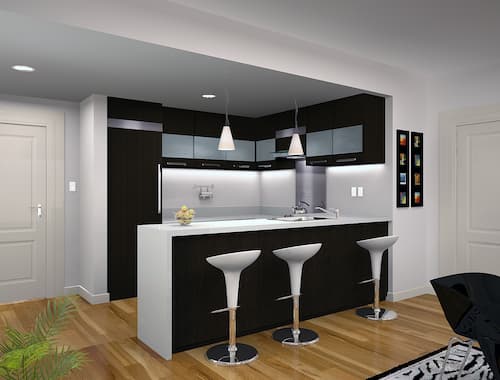
Kitchen renovation in a condominium can be a challenging task for anyone. But with proper planning and execution, the result can be a beautiful and functional space. The key to a successful kitchen renovation in a condominium is to work within the constraints of the existing space while also incorporating your style and operational needs.
So, if you want to know the significance of creating a functional space for this room, you landed on the right page. Here, we will tell you how to make your renovation easier with our tips.
Table of Contents
Steps To Kitchen Renovation
Step 1: Assessment
The first step in any kitchen renovation is to assess the existing layout and determine what you need to change during the process. This remodeling may include re-configuring the structure of the cabinets and appliances or even removing walls to create an open-concept design. It is essential to consider the flow of the space and how the new layout will impact the kitchen’s overall functionality. Always consider the space’s functionality first, and aesthetics can come next to it.
Step 2: Pick the Right Materials
Another essential aspect of kitchen renovation in a condominium is selecting suitable materials and finishes for the job. Cabinets, countertops, and flooring are all key elements that can significantly impact the overall look and feel of the space and your budget. For cabinets, consider options such as wood or laminate because many merchants in the marketplace or malls offer great deals. For countertops, granite, quartz, and solid surface materials are popular, though this might come with a hefty price plus pair it with a kitchen sink mixer. And for flooring, tile, hardwood, and laminate are all durable options that can withstand the wear and tear of a busy kitchen. Plus, pick tiles that probably have a rough finish for the anti-slip feature.
Step 3: Pick the Appliances
When it comes to appliances, it’s important to select high-quality, energy-efficient options that will not only look great but also save you money on your energy bills in the long run. Consider investing in a gas cooktop and a convection oven for more precise temperature control and faster cooking times. And for refrigeration, consider options such as French door refrigerators or built-in units seamlessly integrated into the cabinetry.
Step 4: Consider Lighting
Lighting is another critical aspect of a kitchen renovation. Proper lighting can enhance the overall look of the space and improve functionality. Consider installing under-cabinet lighting and pendant lights over the island or sink to provide task lighting. And for ambient lighting, consider recessed or track lighting. We need to determine if natural light can be a suitable means of illuminating our space during the day.

Step 5: Painting Needs
When it comes to color, consider a neutral color palette that will stand the test of time, such as white or gray. You can also use earth tones like cream or light brown. This will give you a great canvas to add pops of color through accessories and decor.
Step 6: Know Your HOA
Before starting any renovation in a condominium, it is essential to check with the association. This is because rules and regulations may need to be followed, such as obtaining permits or using specific materials. Moreover, it is vital to keep in mind that living in a shared space means that any noise or dust generated by the renovation will affect your neighbors, so it’s essential to plan accordingly and communicate with them throughout the process.
In Conclusion
Overall, a kitchen renovation in a condominium can be challenging but rewarding. By working within the constraints of the existing space and incorporating your style and functional needs, you can create a beautiful and functional kitchen that is sure to impress.

